Discover how direct store delivery (DSD) streamlines your supply chain. Learn the pros, cons, and tech behind DSD to boost efficiency and cut costs.
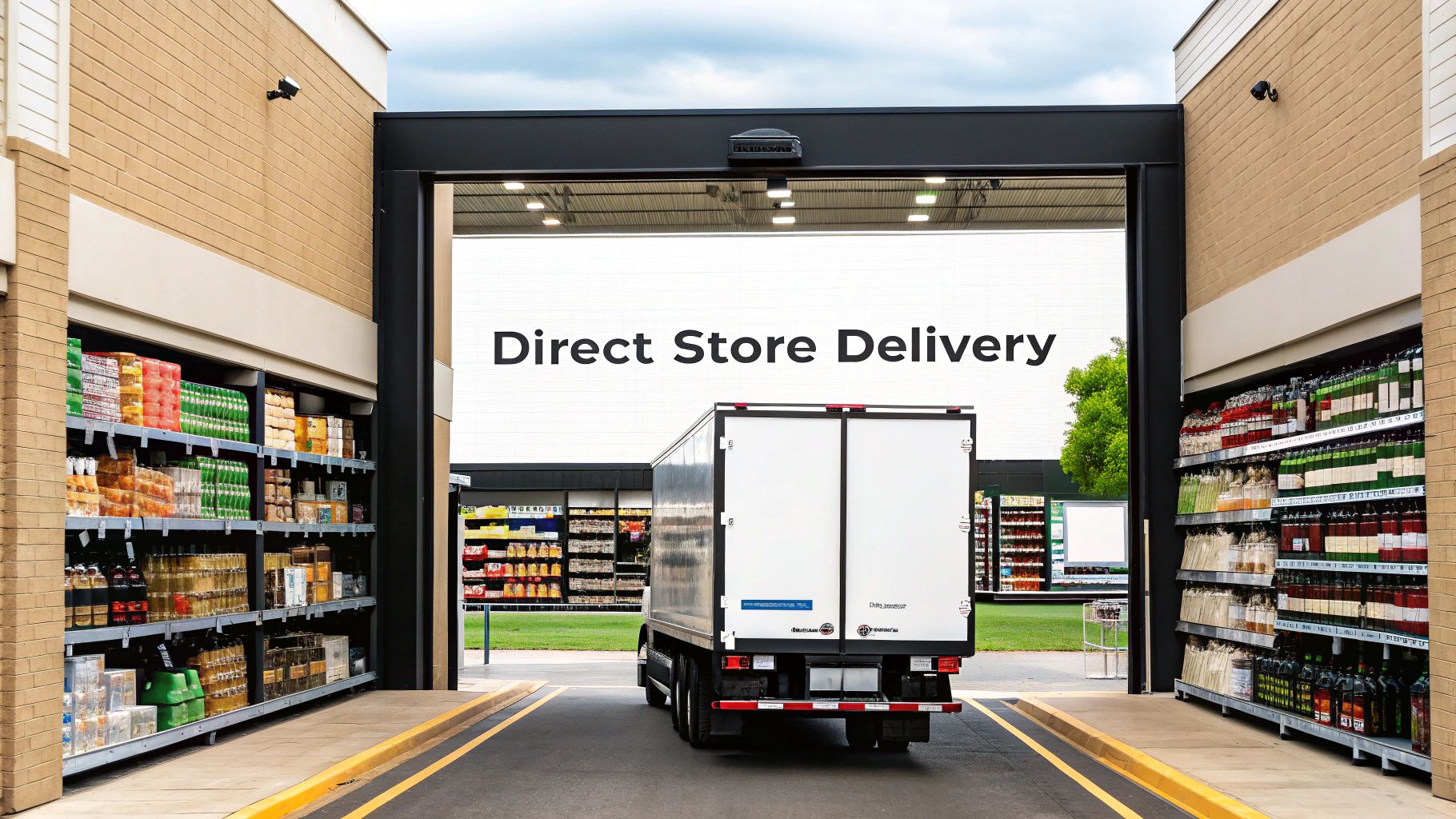
Ever wondered how your favorite bag of chips or ice-cold soda seems to always be perfectly stocked at the local corner store? A lot of the time, the secret isn't magic—it's Direct Store Delivery (DSD).
Think about a local craft brewer. Instead of shipping their beer to a massive, central warehouse to sit for weeks, they load up a truck and deliver it straight to the grocery stores and pubs in town. That’s DSD in a nutshell. It's a distribution method where manufacturers or suppliers bypass the retailer's distribution center entirely and deliver products right to the store's front door.
At its core, DSD is all about cutting out the middleman. The traditional supply chain often involves a long journey: from the factory to a national distribution center, then to a regional warehouse, and finally, onto a truck headed for the store. It works, but it can be slow and clunky.
DSD throws that model out the window for certain products. It’s a strategy built for speed and freshness. This direct route is the lifeblood for products with a short shelf life, high turnover, or delicate packaging. We're talking about things like bread, milk, snack foods, and soft drinks. The goal is simple: get products onto the shelf and into the customer's hands faster, with less handling and less risk of damage.
The old way of doing things means products can get stuck in a warehouse, sometimes for days or even weeks. By the time they hit the shelf, they might not be at their peak. DSD, on the other hand, creates a much more nimble and responsive system.
A few things really make the DSD model stand out:
Looking for a reliable way to get your products directly to retailers? We specialize in the FTL and LTL freight shipping that powers successful DSD operations.
To really see the contrast, it helps to put the two models side-by-side. One is a direct sprint to the finish line, while the other is more of a relay race with multiple handoffs.
Here’s a quick breakdown to make the differences crystal clear.
As you can see, the right choice really depends on the product. For a can of soup with a two-year shelf life, the traditional model is perfectly fine. But for a fresh loaf of bread, DSD is the only way to go.
Visualizing the process can help make it click. The map below shows just how streamlined the flow of products and information is in a DSD system.
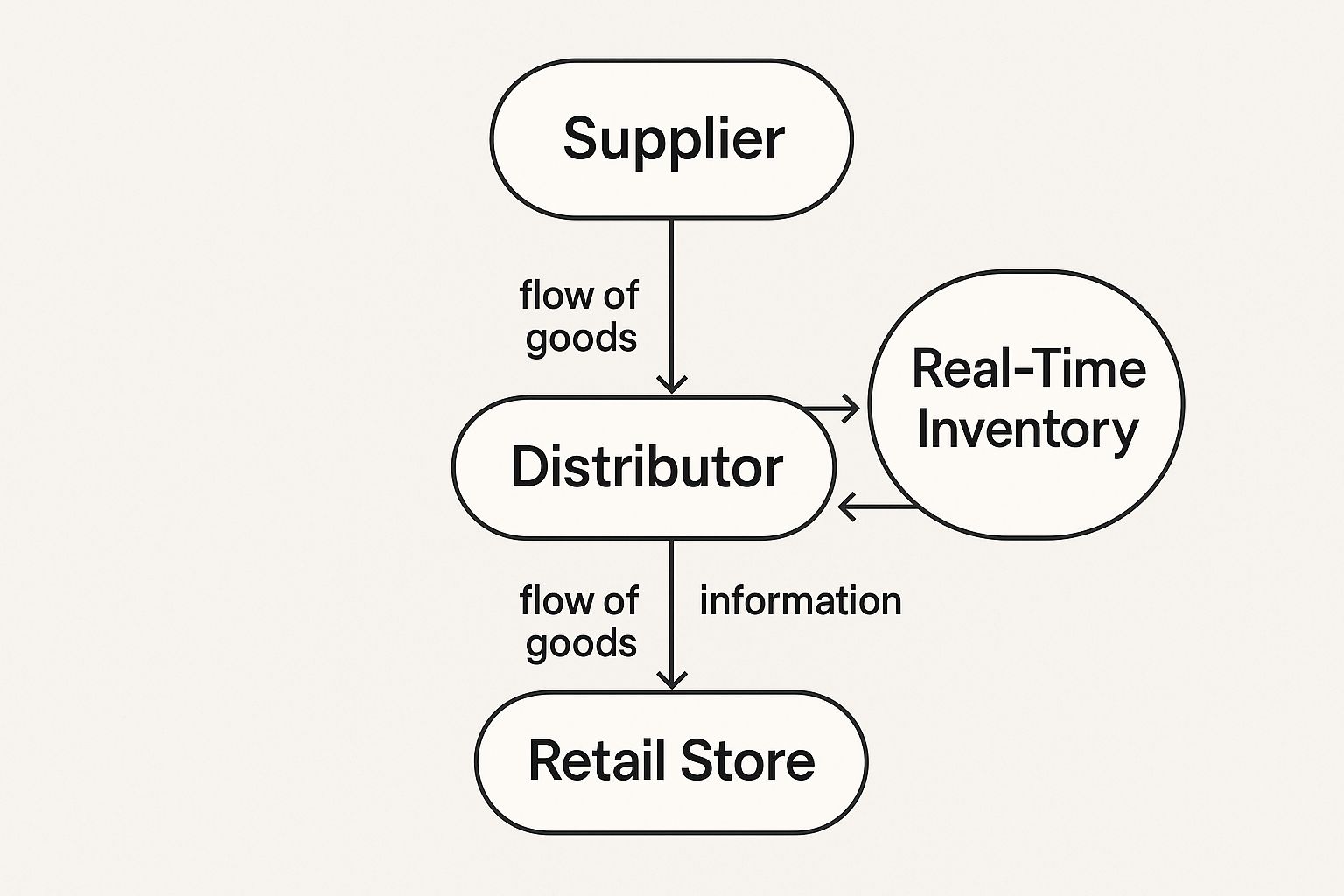
What this shows is a tight loop between the supplier, their delivery driver, and the retail store. Real-time data on what's selling informs the very next delivery, ensuring shelves are always stocked with what customers want. It’s this direct line of communication that makes the DSD model so effective and a powerful alternative to old-school logistics.
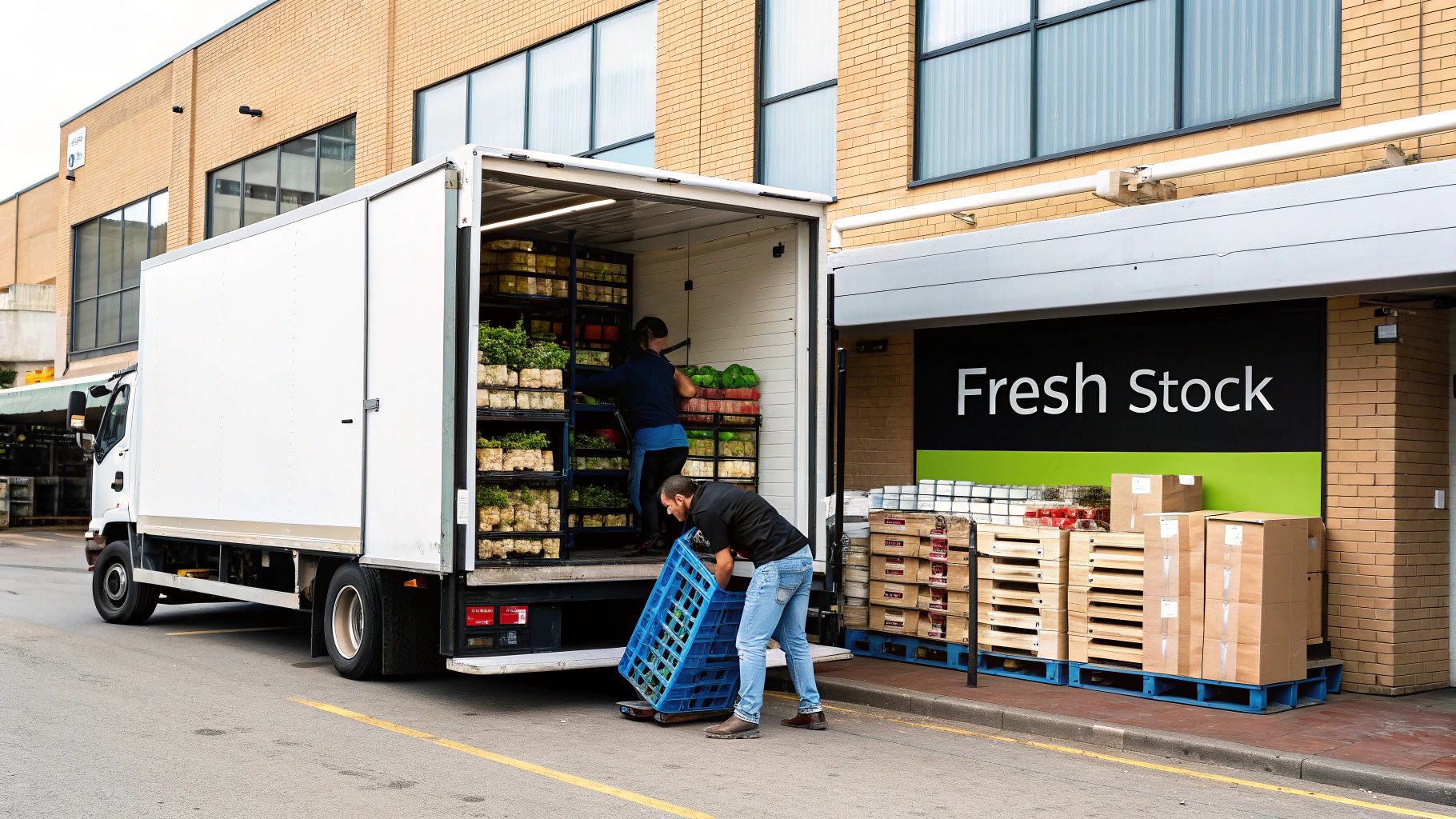
Direct Store Delivery, or DSD, wasn't cooked up in a modern logistics lab. Its story begins way back, born from a simple, universal need: freshness. Long before we had fancy supply chain software, folks in the dairy and baking industries knew a basic truth. Their products just couldn't handle a long, winding trip through a network of warehouses.
The whole model was created out of pure necessity. Just picture the local milkman in the early 1900s. He didn't drop his milk off at some central hub; he took it straight to people's doorsteps and the corner grocer. It was the only way to make sure the milk was fresh and safe. Early beverage companies and bakeries quickly caught on, realizing this direct-to-store approach put speed and quality first, laying the groundwork for the powerhouse strategy we see today.
The food and beverage industry practically invented DSD. For companies selling bread, milk, and eventually snack foods—anything with a ticking clock on its expiration date—getting products to the shelf fast was the difference between making a profit and throwing it away. That direct line became their secret weapon.
But it wasn't just about stopping spoilage. These early DSD pros stumbled upon an even bigger prize: control. With their own people right there in the stores, they could influence how their products were displayed, manage stock on the fly, and build real relationships with store managers. It was a hands-on approach that kept their brands looking good and always ready for customers.
Need to get your products directly to stores with the speed and reliability of a seasoned DSD operation? Find out how our LTL and FTL services can help.
As retail got more complicated, so did DSD. What started as simple delivery runs turned into a highly strategic game. In fact, the model is so critical now that it’s hard to imagine certain store aisles without it. Just think of the massive beverage and snack food companies that built their empires on the back of this strategy.
DSD has completely reshaped retail by letting suppliers skip the warehouse and head straight to the store. Today, it accounts for a huge slice of all retail deliveries, especially in North America where giants like PepsiCo and Frito-Lay rely on it. And the scale is mind-boggling. The global DSD market is on track to hit an estimated USD 1.19 trillion by 2027. You can learn more about the growth of the DSD market on FourKites.com.
Key Takeaway: The journey of DSD shows a clear evolution from a simple delivery tactic to a powerful tool for growing a brand. It's not just about dropping off boxes; it's about owning your presence right where the customer makes their choice.
This explosive growth proves its value in a world that moves faster than ever. The rise of big-box stores and e-commerce didn't kill DSD—it made it even more vital. Retailers started expecting more from their suppliers, demanding more frequent deliveries, better in-store service, and absolutely no empty shelves. DSD was perfectly built to answer that call.
The very things that made DSD work a hundred years ago—speed, freshness, and control—are more critical than ever. The difference is that today, they’re supercharged with technology and data that the early pioneers could only have dreamed about.
The modern DSD operation is a well-oiled machine that gives brands a serious competitive edge for a few key reasons:
From its humble start to its current status as a trillion-dollar global force, Direct Store Delivery has proven it's here to stay. It has fundamentally shaped how many of our favorite products get into our hands, proving that sometimes, the most direct path is the best one.
So, is a direct store delivery strategy the right move for your business? That's the million-dollar question. While it’s a powerhouse of a model, it’s definitely not a one-size-fits-all solution. Making the right call means taking a good, hard look at both the amazing benefits and the very real challenges you'll face on the ground.
Think of it this way: it’s like deciding between owning a home and renting an apartment. Owning gives you incredible freedom to do what you want, but you're on the hook for every leaky faucet and clogged drain. Renting is simpler and less hands-on, but you have to play by someone else's rules. DSD gives you that owner-level control, but it comes with the full weight of logistical responsibility.
The single biggest win with direct store delivery is the incredible control it gives your brand. When it's your own team—or a dedicated partner—placing your products right on the shelf, you get to decide exactly how customers see your brand. That's a huge advantage in a crowded marketplace.
But the benefits don't stop there. Other major perks include:
Key Insight: Direct Store Delivery transforms your delivery driver into a brand ambassador. They are your eyes and ears on the ground, providing real-time feedback and ensuring your products always look their best.
This hands-on approach pays off directly in a better customer experience and, you guessed it, stronger sales.
Of course, it’s not all sunshine and perfect store displays. The DSD model brings its own set of challenges, and for some businesses, they can be deal-breakers. The biggest hurdles usually boil down to two things: cost and complexity.
When you manage your own delivery network, you’re suddenly taking on all the logistical work that a retailer’s warehouse would normally handle. This can bring a whole new world of operational headaches and expenses you need to be ready for.
Here are the main disadvantages to keep in mind:
These factors can really stretch your resources thin. If your business doesn't have the scale or the right partners, the costs can quickly start to outweigh the benefits. That's why figuring out how to reduce freight costs is absolutely critical to making a DSD model sustainable and profitable over the long haul.
Ultimately, deciding whether to go with a direct store delivery strategy comes down to a careful look at your products, your operational muscle, and your overall business goals. For many brands, the extra control and speed are more than worth the investment.
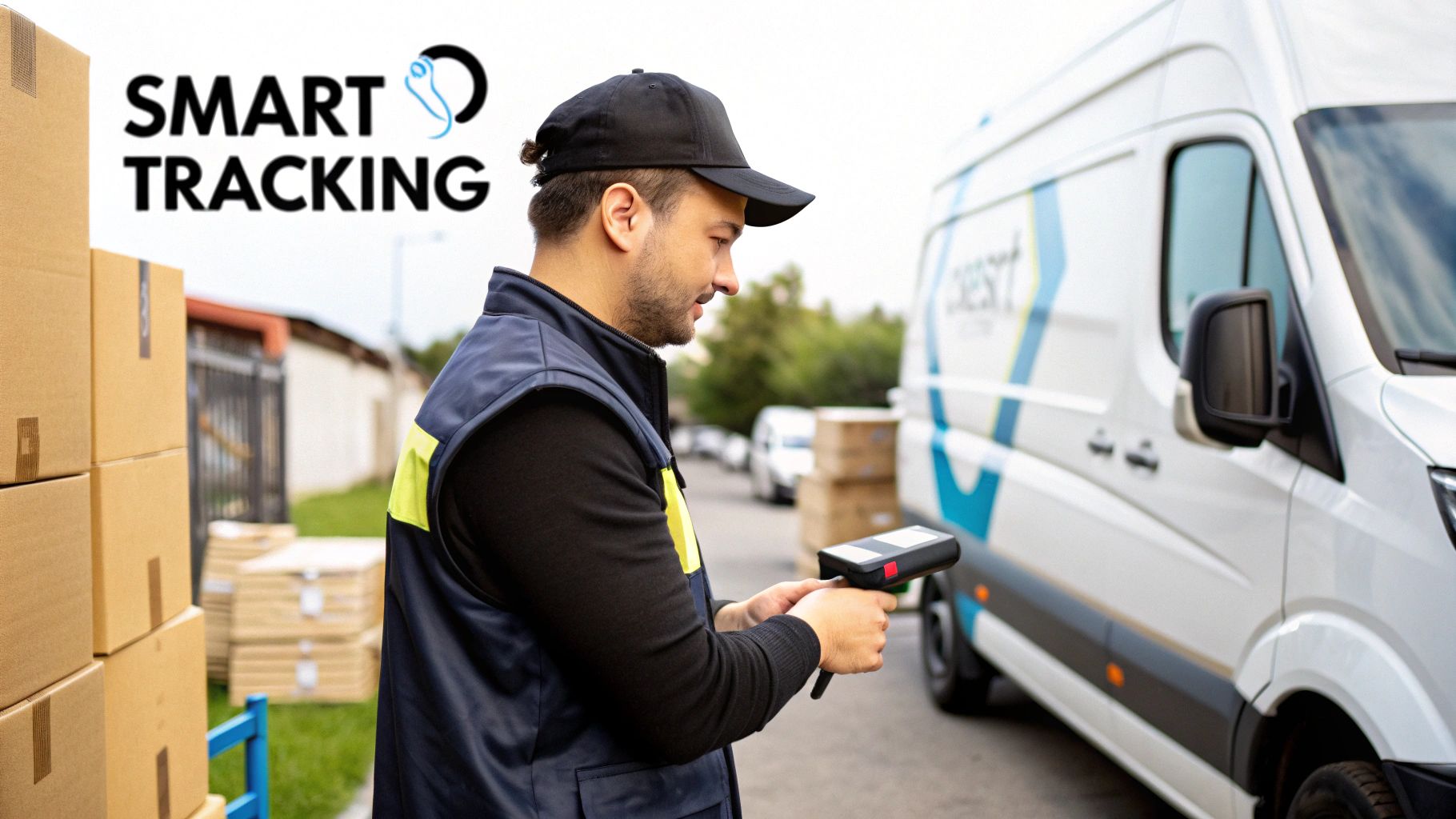
For some industries, direct store delivery isn't just a smart move; it’s the only move. It’s the core of their business model, the very thing that keeps them competitive and profitable. While DSD principles can be applied pretty widely, you really see its magic in sectors where product characteristics like freshness and fragility make speed an absolute must.
These are the businesses where sending products straight to the store isn't a shortcut—it's the most sensible route to market. By looking at who’s already succeeding with this model, you can get a better sense of whether your own products are a good fit. If you're dealing with goods that are perishable, fragile, high-value, or sell out fast, you’ll probably find some inspiration here.
You won’t find a better example of direct store delivery in action than the food and beverage industry. For these companies, a product's shelf life is a ticking clock, and every hour counts. A traditional distribution model that adds days—or even weeks—to the supply chain simply doesn't work for their most popular items.
Think about the products where this model is a no-brainer:
In the food and beverage world, the DSD driver is often a salesperson, merchandiser, and stocker all rolled into one. They aren't just dropping off boxes; they're rotating stock, building eye-catching displays, and making sure their brand looks its absolute best.
It's not just about groceries. Direct store delivery is also a huge asset for products where security, regulations, and careful handling are the top priorities. When you're dealing with these kinds of goods, a shorter, more controlled supply chain is all about minimizing risk and staying compliant.
Key Consideration: For products with strict handling requirements, a direct route isn't just about efficiency—it's about risk management. Every touchpoint you remove from the supply chain is one less opportunity for something to go wrong.
Two industries that lean heavily on DSD for this very reason are pharmaceuticals and high-end electronics.
Pharmaceuticals: Prescription drugs and many over-the-counter medicines come with a long list of rules for handling, storage, and chain-of-custody. A direct delivery model helps ensure these sensitive products get from the supplier to the pharmacy securely, with a clear and unbroken tracking record to protect product integrity and patient safety.
High-Value Electronics & Fragile Items: Nobody wants to open a box to find a shattered TV screen. For pricey electronics, specialized equipment, or even delicate items like floral arrangements, damage is a massive concern. The fewer people who handle the product, the better. A direct-to-store approach dramatically cuts the risk of breakage that’s all too common in a bustling distribution center.
Let's be honest: successful direct store delivery today is about so much more than just having good drivers and reliable trucks. It’s now a game of technology. The old-school world of clipboards, paper invoices, and relying on a driver's memory is fading fast. Modern DSD is a high-tech, data-rich operation, and the right software is what turns this complex logistical dance into a genuinely profitable strategy.
Think of this tech as the central nervous system of your DSD model. It’s not just a nice-to-have feature; it’s the core of what makes the whole thing work in a competitive market. It gives you the clear line of sight you need to track every single delivery, automates the tedious manual tasks that used to burn hours of time, and ultimately gives your business a real competitive advantage.
To pull off DSD without constant headaches, you really need a few key pieces of technology working in harmony. Each tool is designed to solve a specific part of the puzzle, from planning the most efficient routes in the morning to getting that final delivery confirmation in the afternoon. Without this digital foundation, things can get messy and expensive, fast.
Here’s a look at the essential technologies every modern DSD operation should have:
When these tools work together, they create a connected system where information flows freely from the warehouse to the driver and back again, making sure every step is as efficient as it can be.
Need to handle the LTL and FTL shipping that powers your DSD routes? We can provide the capacity you need.
Once you have the basics covered, a few other technologies can give you an even sharper edge. These tools go beyond just making things efficient; they use data to help you get ahead of problems before they even happen.
Telematics, for example, is a game-changer for managing a modern fleet. By putting sensors in your vehicles, you get a firehose of useful data on driver behavior—things like speeding, harsh braking, and idling time. This information is pure gold for improving safety, cutting down on vehicle maintenance, and saving a ton on fuel. Our comprehensive guide on how to ship freight digs deeper into smart logistics like this.
The Modern Reality: Technology transforms DSD from a reactive process of just "dropping off goods" to a proactive strategy. It’s about using data to anticipate needs, solve problems before they happen, and continuously improve performance.
The growth here is pretty telling. The global DSD software market was valued at around USD 10.8 billion in 2022 and is forecast to climb to USD 20.64 billion by 2033. That’s a massive jump, and it shows just how much businesses are investing to make their DSD models work flawlessly. You can discover more insights about this growing market on Verified Market Reports. This spending spree on tech makes one thing clear: DSD isn't just a trend, it's a vital part of modern retail.
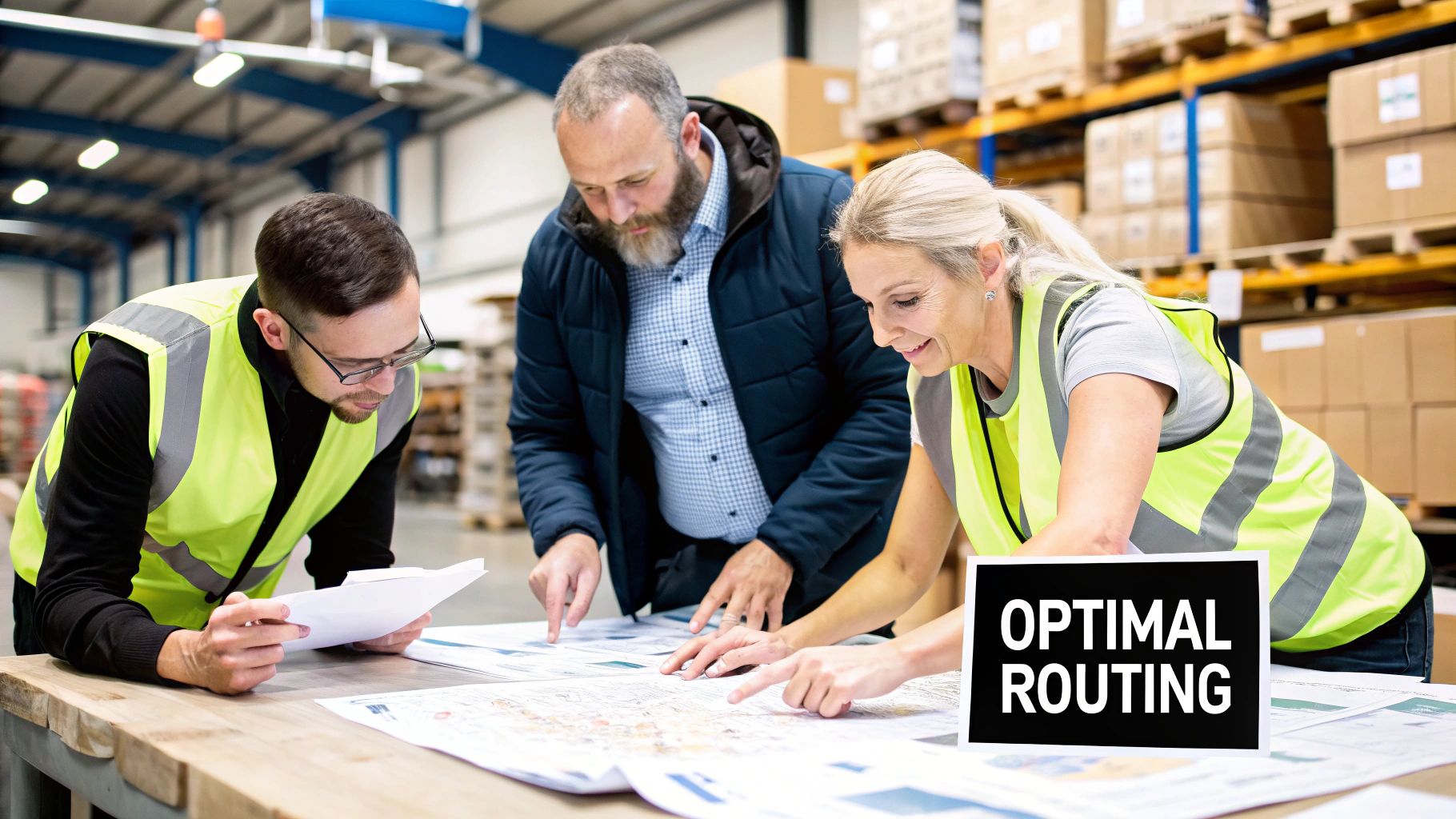
So, are you thinking about putting a direct store delivery model to work for your business? A great DSD strategy has a lot of moving parts, but its success really boils down to one thing above all else: rock-solid, precise transportation. That’s where we come in.
At FreightQuotesNow, we handle the most crucial piece of the DSD puzzle—getting your products where they need to go, on time, every single time. This frees you up to focus on the things you do best, like growing your brand and managing those important retail relationships, while we provide the dependable transportation backbone you need to succeed.
No matter your strategy—whether it involves frequent, small-batch shipments or large initial stock-ups—we have a solution that fits. We connect you with the perfect carriers for your specific needs, ensuring your freight is handled with professional care from the moment it’s picked up to the moment it’s delivered.
A successful DSD system has to be flexible. Your shipping needs can change on a dime due to new product launches, seasonal rushes, or special promotions. That’s why we offer a full spectrum of freight services designed to power your logistics.
Think of us as your in-house freight department, but without the overhead. We act as your single point of contact, taking all the hassle and complexity out of finding reliable carriers. It’s here that partnering with an expert freight broker can be a game-changer for your business.
Our core services are built to support DSD operations like yours:
We don't just find you a truck; we find you the right truck. Our job is to match your specific freight requirements with a vetted, reliable carrier from our extensive network, ensuring your direct store delivery chain is never broken.
We get it. In a DSD model, a late delivery isn't just a minor hiccup—it's a lost sale. Our entire focus is on providing the precision and dependability your business needs to thrive in a competitive market. We handle all the carrier relationships, rate negotiations, and scheduling so you can stay focused on the bigger picture.
Let us handle the logistics, so you can focus on building your brand.
Alright, we’ve covered a lot of ground on direct store delivery. But even when the concept makes sense on paper, a few practical questions always pop up. Let's tackle some of the most common ones I hear from business owners trying to figure out if DSD is the right move for them.
Think of this as the final, practical chat to clear up any lingering doubts.
That’s a common first impression, but it's not the whole picture. It’s easy to focus on the individual shipping costs and think, "Wow, all those separate deliveries must add up!"
But you have to look at the total cost. Sure, individual LTL shipment costs might be higher, but DSD lets you sidestep huge expenses. You're cutting out warehouse rent, storage fees, and the labor costs of having your products handled multiple times at a distribution center. For businesses selling things that sell fast or go bad quickly, DSD is often way more cost-effective in the long run. When you add up the money saved by preventing spoilage and the extra revenue from never being out of stock, DSD often comes out on top.
Not at all! In fact, DSD is incredibly flexible and can work for businesses of any size. The classic example is a local baker delivering fresh bread directly to a handful of neighborhood cafes each morning. That's DSD in its purest form.
You don’t need a massive fleet of branded trucks to get started. By partnering with a solid LTL freight provider, even a small business can run a professional DSD operation. This approach gives you all the benefits of speed and control without the massive upfront cost of buying and maintaining vehicles. It's a fantastic way for growing companies to compete.
This is one of the most powerful—and often overlooked—perks of DSD. With direct delivery, the person dropping off your product is more than just a driver; they often become your brand's representative in the store.
They aren't just leaving a pallet on a loading dock and getting a signature. They're the ones walking the aisles, restocking your specific shelf space, making sure every item is faced forward, and even setting up promotional displays.
This hands-on approach gives you direct control over how your product looks to a shopper at that critical moment of decision. It ensures your section is always neat, full, and appealing, which can have a massive impact on how fast your products fly off the shelves.
This is a really common mix-up, but the difference is actually pretty simple. It all boils down to one question: who is the final customer?
Last-Mile Delivery is all about getting a product to an individual person. Think of the Amazon driver bringing a package to your front door. It’s a B2C (business-to-consumer) play.
Direct Store Delivery is about getting a product to another business—specifically, a retail store. The journey ends when your goods are on the shelf, ready for a consumer to buy. It’s a B2B (business-to-business) model.